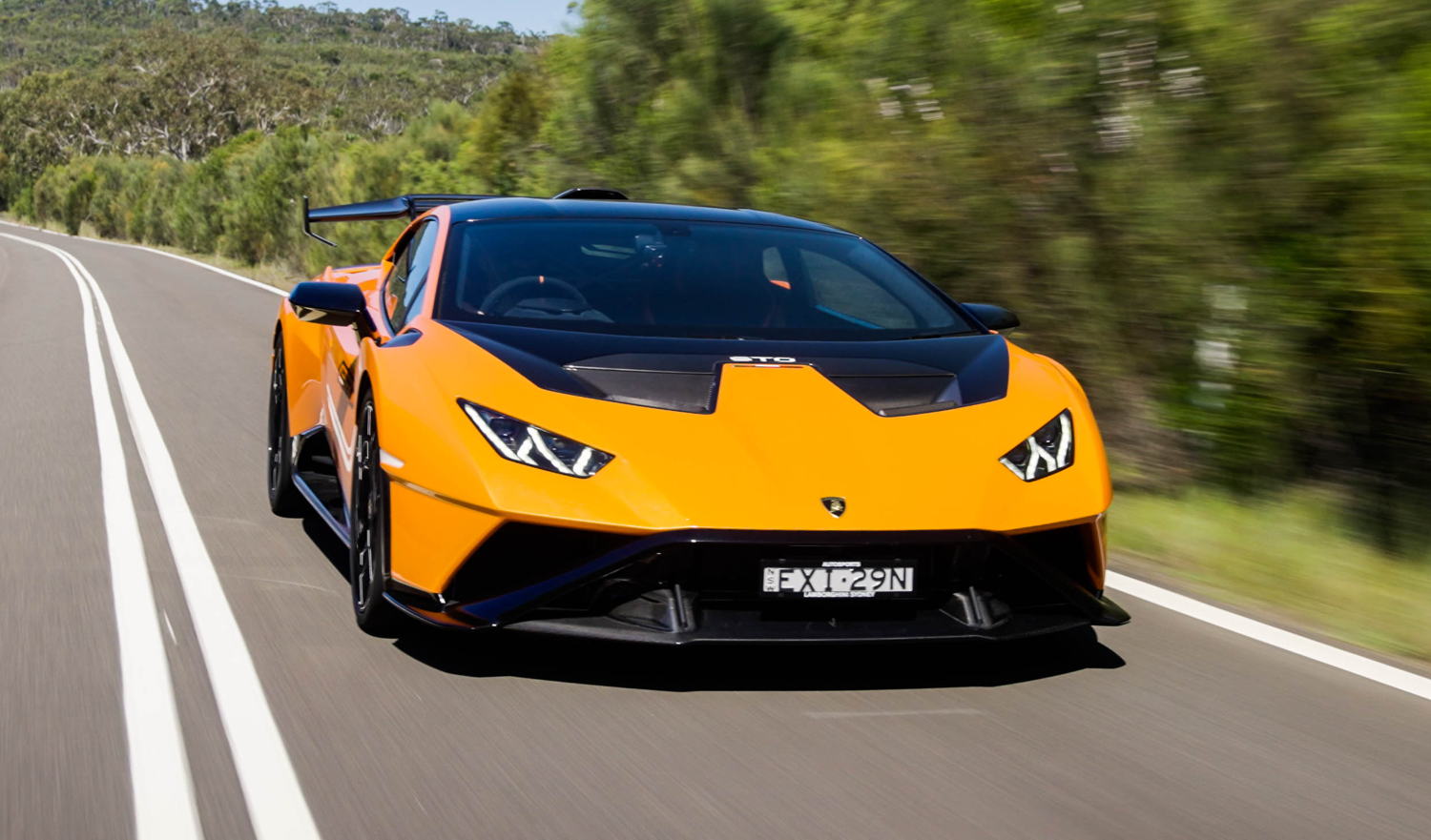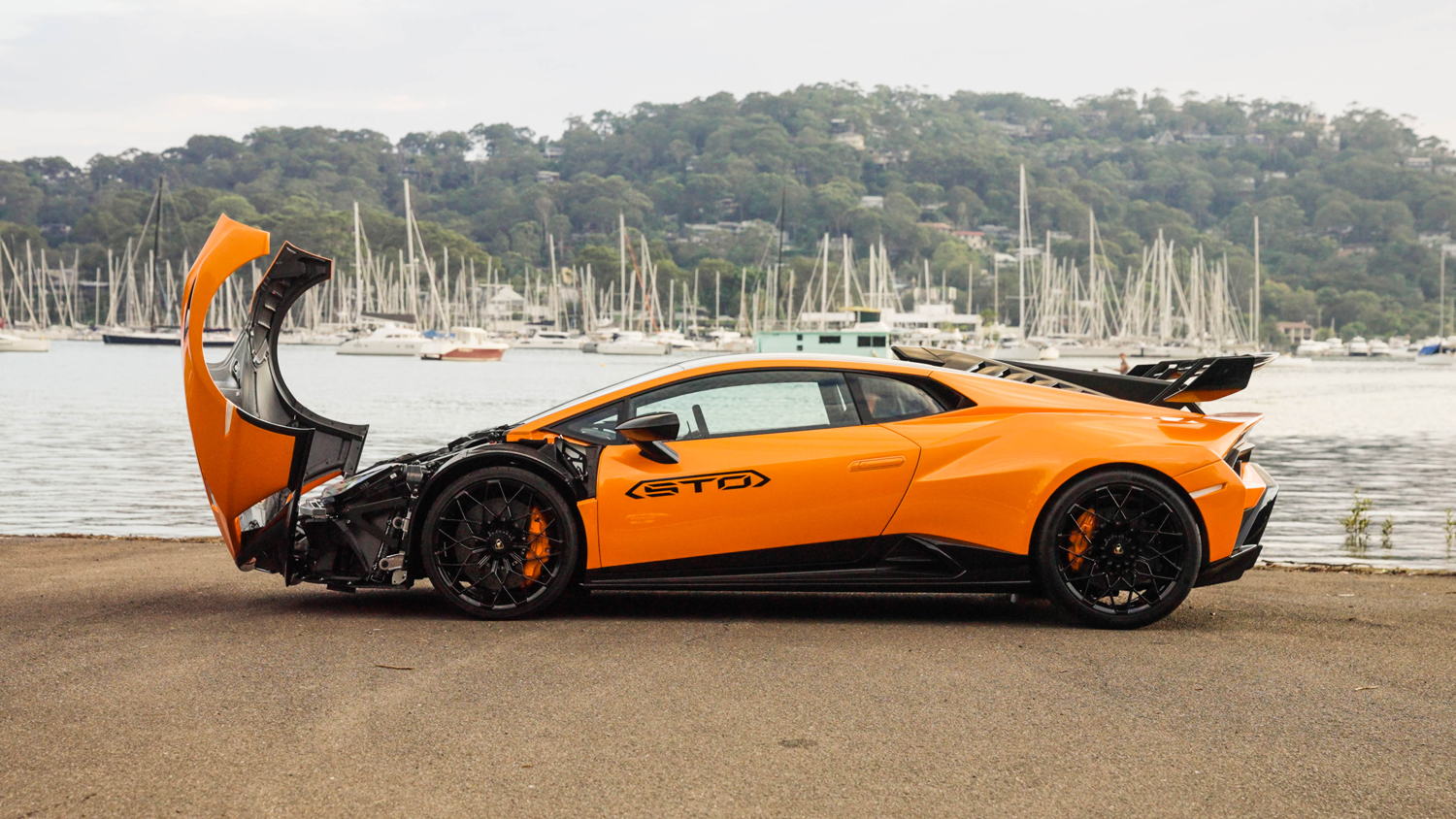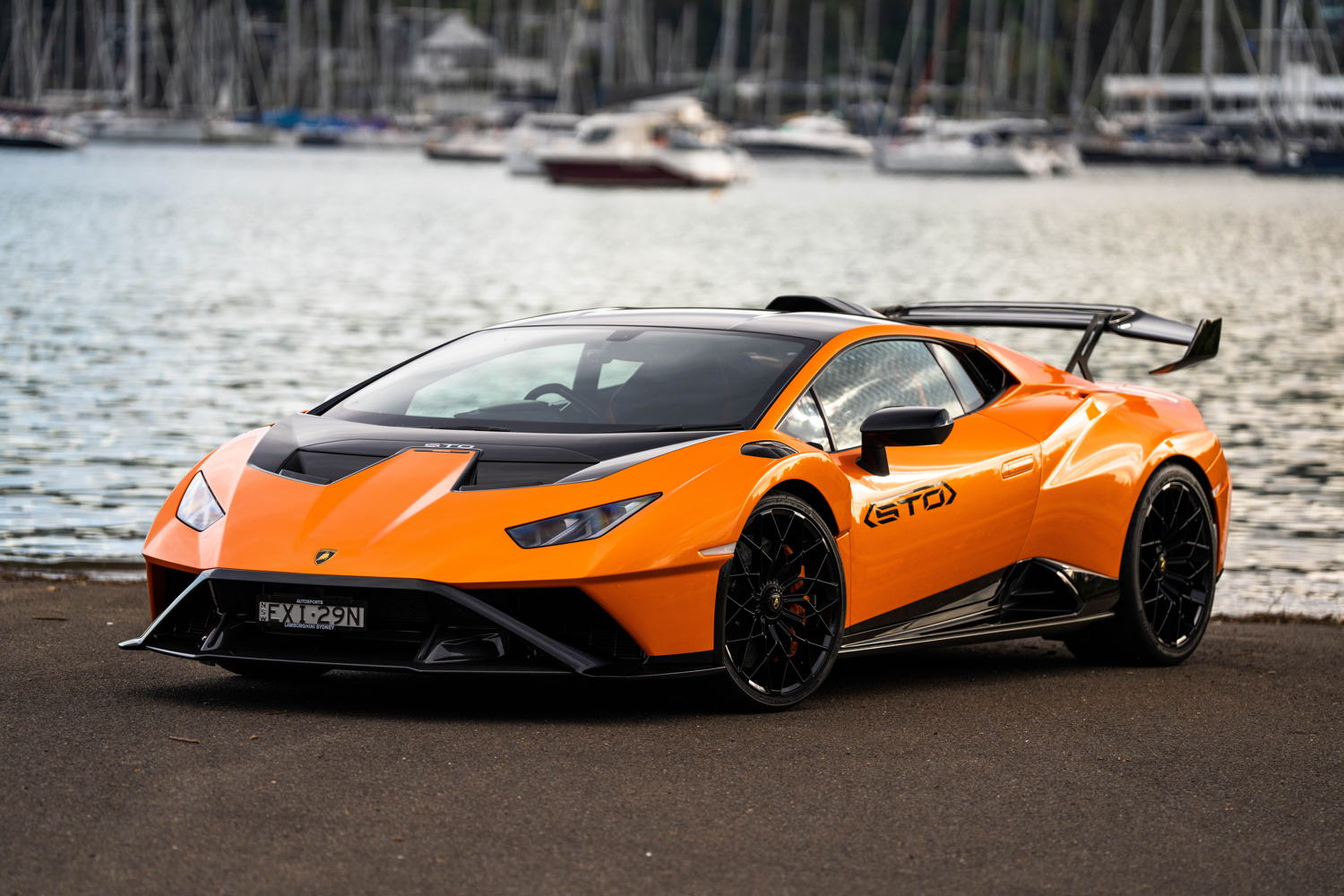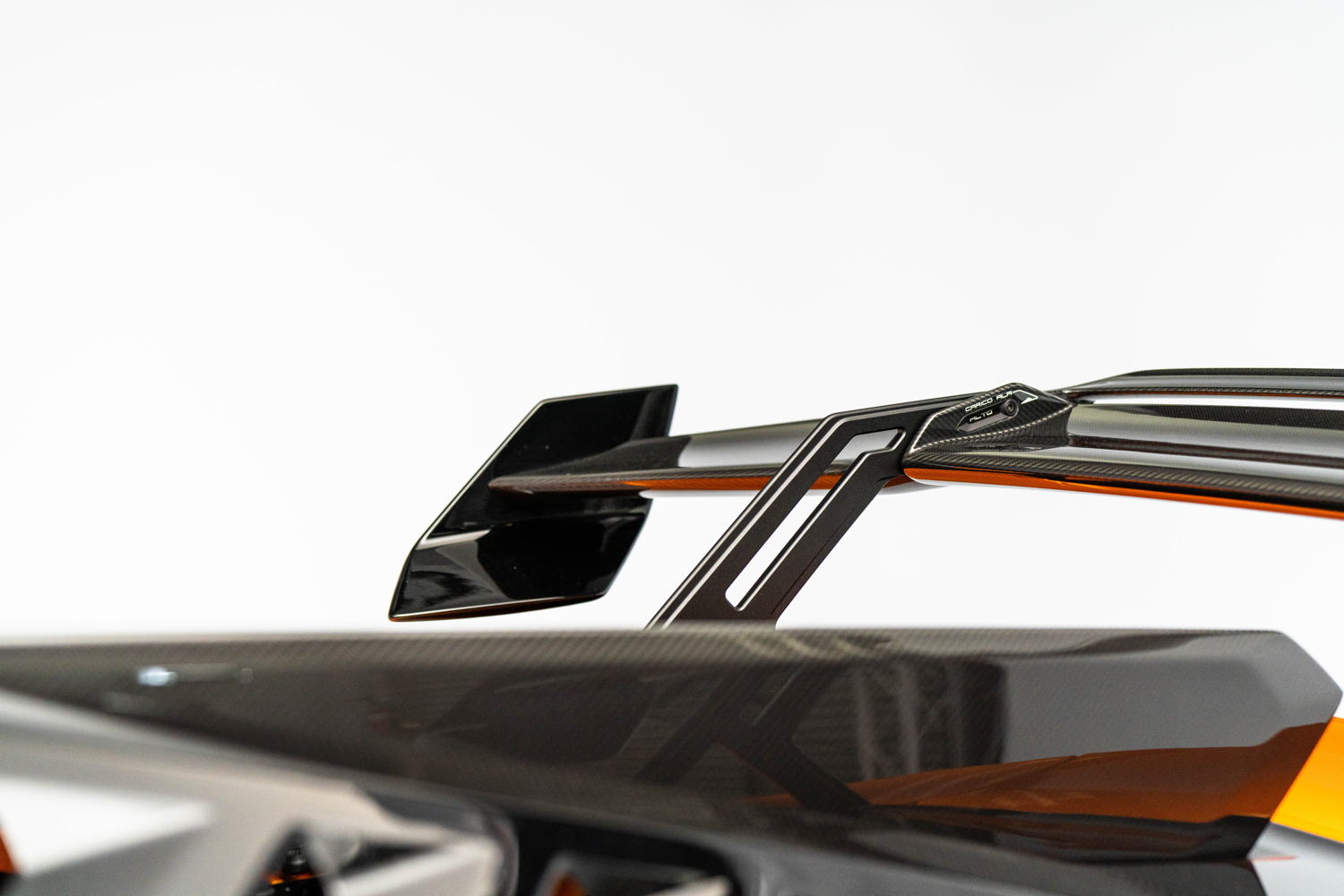Against a tide of turbocharging and electrification, Lamborghini has fought the good fight for natural aspiration. It farewells NA with the Huracan STO.
Even for a lucky bugger whose job it has been to test cars for over 25 years, there are certain key fobs that carry more weight in my hand. Any time I collect a big-time Porsche, McLaren, Aston Martin, Maserati, Audi RS, BMW M or Mercedes-AMG, there’s a genuine sense of excitement that the mundanity of middle age and a quarter of a century in the industry cannot suppress. Proving that I’m no high-end snob, the same frisson of excitement ripples through my palm when the key to a Civic Type R or Hyundai i30N is dropped into my hand – RS Clios and Meganes always had me volunteering for the car collection task.
But of all of the brands I’ve been fortunate enough to test semi regularly over the years (therefore excluding the unicorn opportunities to drive the likes of Bugattis and Paganis), a collection of a Ferrari or Lamborghini stands taller. It’s the same process as all other cars that we have on test – sign insurance forms (some with eye-watering excesses), negotiate a workable kilometre limit, and complete a pre-handover inspection to ensure that you’re not getting stitched up with a scuff on a wheel or a stone-chipped windscreen (see insurance excess). In the case of the really low stuff, it’s also a good idea to know where the nose-lift button resides and to have a look at the driveway so you can plan angles. In the case of Porsche, Ferrari, McLaren and, especially Lamborghini, those driveways feed into very busy roads.
Formalities and faff out of the way, it’s time to acknowledge the Raging Bull badge glinting back at me from the steering wheel boss as I get my bearings while negotiating Parramatta Road. At age seven, I used my pocket money to buy my first car magazine (the July 1984 issue of Wheels) and instantly declared to myself that this is what I wanted to do. And of all the cars that I read about over those early years, it was Lamborghini’s Countach that held me most tightly in its thrall.
The STO represents the ultimate iteration of the Huracan, a model that’s soon to be replaced and one that feels like it’s grown up with Automotive Daily’s evo Australia. In just our fifth issue, we farewelled the Gallardo and a couple of issues later, welcomed the Huracan. As with the Gallardo before it, the Huracan has undergone numerous iterations over its decade in production, with Lamborghini gradually peeling back the layers to reveal the true essence of its junior supercar – though in looks and deed, there’s very little junior about the STO.
Over my left shoulder is Lamborghini’s familiar and still glorious 5.2-litre naturally aspirated V10. It makes 470kW at 8000rpm, 565Nm at 6500rpm, which is also familiar from the Huracan Technica and Evo models. As a farewell, model, maybe the lack of a power increase is a smidge disappointing, certainly in context to turbocharged big hitters from Ferrari, McLaren and Porsche. But when that naturally aspirated engine storms beyond six grand in third gear, those thoughts are banished for good. Primarily because the STO is so loud that all conscious thought ceases. That power is sent through the rear wheels via a seven-speed dual-clutch gearbox.
Of course, the devil is in the detail and the STO has lots of detail. Aero and lightweighting have been two of the most intensely interrogated areas and the results are pretty impressive. One of the significant changes that benefits both is the adoption of a one-piece clamshell for the front end, dubbed the cofango, which is a fusion of cofano (hood) and parafango (fender). It’s carbonfibre, as are all the panels save the roof and door skins, and the twin bonnet ducts improve cooling flow through the radiators and increase downforce. Vents on the wheelarches also reduce wheel well pressure, the front splitter feeds the underbody and rear venturis, and the rear ‘shark fin’ increases yaw stability and helps shape the airflow onto the manually adjustable rear wing. Overall aero efficiency is improved by 37 per cent, with downforce 53 per cent up on the Performante. The STO can run three aero configurations depending on rear wing setting – low downforce (324kg at 280km/h), mid (363kg) and high (420kg).
Aside from the obvious ‘free’ weight saving of removing the all-wheel-drive system, the STO does all the cool things to further suck out unnecessary flab. Thinner glass, carbonfibre for everything, a stripped-back interior and optional magnesium wheels are the headline items. The result is a dry weight of 1339kg, which is 43kg less than the Performante but still a little chubby compared with the svelte 765LT’s dry figure of 1229kg. In fact, the McLaren’s DIN kerb weight (all fluids, 90 per cent fuel) is an exact match for the Lamborghini without so much as a drop of coolant.
There are myriad other changes. New CCM-R brakes that should be much more consistent and offer better feel, a brand new and bespoke Bridgestone Potenza tyre in Sport and Race configurations, revised magnetic dampers and an e-differential, a much-modified rear-wheel-steering system and a new 13.4:1 fixed-ratio steering rack. The ANIMA switch adjusts each element between STO, Trofeo and Pioggio (rain) modes. There’s a new Akrapovic exhaust system, too. I’m not sure performance figures mean anything these days but this rather ‘underpowered’ contender does 0-100km/h in three seconds dead, 0-200km/h in nine flat and that big wing calls an end to acceleration at 310km/h.
Thanks to work/life balance, the Huracan STO remains tucked up until most people’s bedtime. It feels slightly illicit to point the nose of the STO out of Sydney’s sprawl under the deep cover of darkness but also fitting. After all, if a rear-drive 470kW naturally aspirated track-focused supercar can’t make you go out of your way for a drive, perhaps you’re not that much of an enthusiast. The STO demands that you make that effort.
Sydney cleared, traffic non-existent, it’s time to get to work. Even the wildlife has deemed this cold winter’s night too much and nothing furry scurries across the roads. Perhaps they’ve scampered the other way to flee whatever animal is emitting this fearsome cry.
It seems slightly mad to spend yet more time heaping praise on this 5.2-litre V10 but, well, I’m going to anyway. Not least because the engine’s almost overwhelming fury is underpinned by thrillingly intuitive throttle response. Such bite and intensity rarely go hand-in-hand with nuance and subtlety, but here they are perfectly in tune. Lamborghini has worked hard on the throttle map, so there’s none of the near-binary behaviour of some other Huracans in the more aggressive ANIMA settings. The dual-clutch gearbox remains simply magical. And, as it turns out, this delicate balance between outright force and precise, easily manipulated adjustability is mirrored in the chassis, too. I’d feared a sort of locked-down, muscular experience. All grip and heavy-handed ‘drama’ ladled on with artificial weight and exaggerated brutality. This is an oft-repeated habit at Lamborghini. Instead, the STO is sweetness itself and has real fluidity and deft responses. It’s unlike any Huracan I’ve driven before.
Familiar roads and a little more pace make the switch to Trofeo mode seem appropriate. You can immediately hear and feel the difference as the magnetic dampers tense up, and while the ride becomes a little more jagged, the added control is tangible. It’s great to feel the STO really rip into the surface yet retain its lightness of touch in terms of balance. The steering remains very low-effort and isn’t exactly full of detail but now I’m more in tune with the car the communication is clear. Each corner is a new chance to exploit the terrific front-end grip and then load up the rear tyres as quickly as possible.
Trofeo mode loosens the reins of ESC and you can hear and feel the rear tyres slip and grip as they paw for traction. It’s an intense experience made more so by the feeble headlights. I’ve driven at pace at night on this road in the last 911 GT2 RS and the headlights just about kept pace with the frantic action. In the Lambo, it’s only back-of-the-hand familiarity with the road and a slower-paced recce to confirm the integrity of the surface that allows me to commit to braking zones and tip-in points. On an unfamiliar road, there’s no way the headlights would be good enough to explore a fraction of the STO’s well of talent. Which is a shame, as a good night drive is an absorbing thrill in the right car.
Pragmatism and Lamborghini are strange bedfellows but there must also be mention of the STO’s price. It lists at $607,920 which is around $150K more than the Huracan Technica. Yes, the STO offers a more intense driving experience, but there are obvious similarities. Then again, you could say the same of the Porsche 911 range that more than doubles in price from bottom to top. The STO we tested wore nearly $260K in options for a total of $867,640 before on-road costs.
Of course, price and a familiar powertrain mean nothing in the true context of the STO. It’s a properly crazy Lamborghini and the seven-year-old in me approves.








